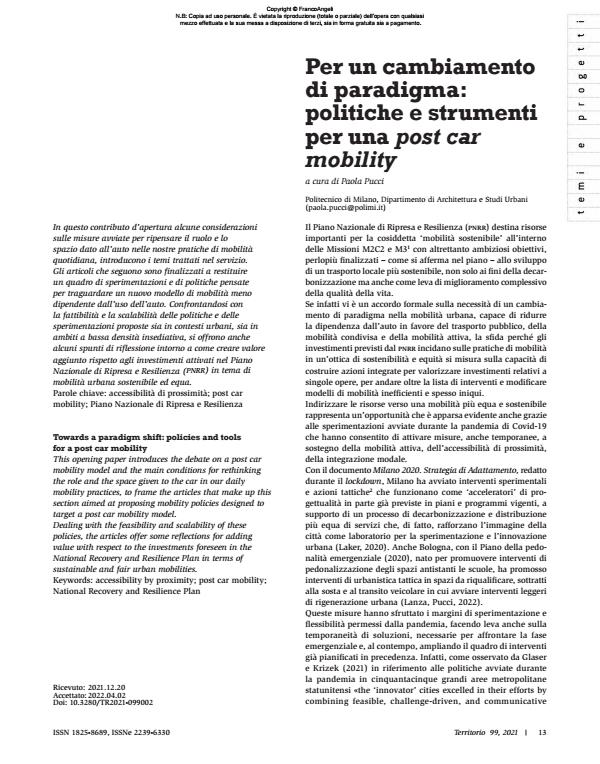Towards a paradigm shift: policies and tools for a post car mobility
Journal title TERRITORIO
Author/s Paola Pucci
Publishing Year 2022 Issue 2021/99
Language Italian Pages 4 P. 13-16 File size 121 KB
DOI 10.3280/TR2021-099002
DOI is like a bar code for intellectual property: to have more infomation
click here
Below, you can see the article first page
If you want to buy this article in PDF format, you can do it, following the instructions to buy download credits

FrancoAngeli is member of Publishers International Linking Association, Inc (PILA), a not-for-profit association which run the CrossRef service enabling links to and from online scholarly content.
This opening paper introduces the debate on a post car mobility model and the main conditions for rethinking the role and the space given to the car in our daily mobility practices, to frame the articles that make up this section aimed at proposing mobility policies designed to target a post car mobility model. Dealing with the feasibility and scalability of these policies, the articles offer some reflections for adding value with respect to the investments foreseen in the National Recovery and Resilience Plan in terms of sustainable and fair urban mobilities.
Keywords: accessibility by proximity; post car mobility; National Recovery and Resilience Plan
- Mesh-Cities, PostCar-Cities: spazi della mobilità per una nuova rigenerazione socio-urbana Emanuele Sommariva, in TERRITORIO 108/2025 pp.55
DOI: 10.3280/TR2024-108005 - Why do we rely on cars? Car dependence assessment and dimensions from a systematic literature review Jaime Sierra Muñoz, Louison Duboz, Paola Pucci, Biagio Ciuffo, in European Transport Research Review 17/2024
DOI: 10.1186/s12544-024-00639-z
Paola Pucci, Per un cambiamento di paradigma: politiche e strumenti per una post car mobility in "TERRITORIO" 99/2021, pp 13-16, DOI: 10.3280/TR2021-099002